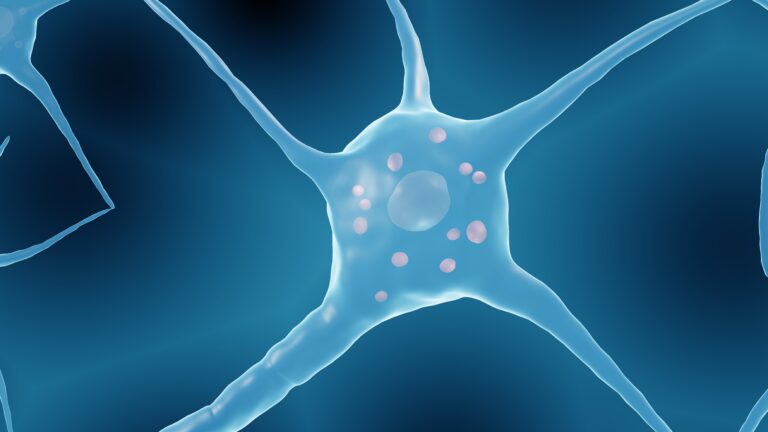Dementia is a broad term used to describe a range of symptoms affecting cognitive function, such as memory loss, problems with thinking and reasoning, and changes in personality and behavior. Alzheimer’s disease is the most common form of dementia, accounting for 60-80% of all dementia cases. It is a progressive neurological disorder characterized by the gradual deterioration of cognitive abilities, eventually leading to severe impairment and, ultimately, death.

The etiology of Alzheimer’s disease and other forms of dementia is multifactorial, involving a complex interplay of genetic, environmental, and lifestyle factors. Among these, genetics plays a significant role in determining an individual’s susceptibility to developing dementia. In this essay, we will delve into the role of genetics in dementia and Alzheimer’s risk, exploring the different types of genetic contributions, specific genes and mutations involved, and the implications for diagnosis, prevention, and treatment.
Types of genetic contributions
There are two primary ways in which genetics can contribute to the risk of developing dementia and Alzheimer’s disease: through rare mutations that cause early-onset familial Alzheimer’s disease (EOFAD) and through common genetic variations that influence the risk of late-onset Alzheimer’s disease (LOAD).
- Early-Onset Familial Alzheimer’s Disease (EOFAD)
EOFAD is a rare, inherited form of Alzheimer’s disease that accounts for less than 5% of all cases. It is characterized by an earlier age of onset, typically occurring between the ages of 30 and 60. EOFAD is caused by mutations in specific genes, which lead to a high likelihood of developing Alzheimer’s disease in individuals who carry these mutations.
Three genes have been identified as harboring mutations that cause EOFAD: amyloid precursor protein (APP), presenilin 1 (PSEN1), and presenilin 2 (PSEN2). Mutations in these genes lead to an overproduction of amyloid-beta (Aβ) peptides, which aggregate to form amyloid plaques, a hallmark of Alzheimer’s disease. These mutations are inherited in an autosomal dominant manner, meaning that an individual only needs to inherit one copy of the mutated gene from either parent to develop the disease.
- Late-Onset Alzheimer’s Disease (LOAD)
LOAD is the most common form of Alzheimer’s disease, affecting individuals over the age of 65. The genetic contributions to LOAD are more complex and involve multiple genetic variants, each with a small effect on disease risk. These genetic factors interact with environmental and lifestyle factors to determine an individual’s overall risk of developing Alzheimer’s disease.
The most well-known genetic risk factor for LOAD is the apolipoprotein E (APOE) gene, which has three main alleles: ε2, ε3, and ε4. The ε4 allele is associated with a higher risk of Alzheimer’s disease, while the ε2 allele is associated with a lower risk. Individuals with one copy of the ε4 allele are approximately 3 times more likely to develop Alzheimer’s disease, while those with two copies of the ε4 allele have a 12-fold increased risk.
Other genes have also been identified as playing a role in LOAD risk, including clusterin (CLU), complement receptor 1 (CR1), and phosphatidylinositol-binding clathrin assembly protein (PICALM), among others. These genes are thought to be involved in various biological processes, such as inflammation, lipid metabolism, and synaptic function, which may contribute to the development and progression of Alzheimer’s disease.
Genome-Wide Association Studies (GWAS)
In recent years, genome-wide association studies (GWAS) have been instrumental in identifying numerous genetic variants associated with an increased risk of Alzheimer’s disease and other dementias. GWAS involve the analysis of large populations to identify common genetic variants that are associated with specific diseases or traits. By comparing the genetic profiles of individuals with and without Alzheimer’s disease, researchers have been able to identify dozens of genetic variants associated with increased risk for the disease.
These variants are typically located in or near genes that are involved in various biological processes implicated in Alzheimer’s disease, such as amyloid processing, tau protein metabolism, inflammation, and immune response. Although each variant may only have a small effect on disease risk, the cumulative impact of multiple risk variants can be substantial.
The ongoing discovery of genetic variants associated with Alzheimer’s disease and other dementias has significantly improved our understanding of the biological pathways involved in these disorders. This knowledge may ultimately lead to the development of novel diagnostic tools, prevention strategies, and targeted therapies.
Epigenetics and Alzheimer’s Disease
In addition to the direct influence of genetic variations, epigenetic modifications also play a role in Alzheimer’s disease and dementia risk. Epigenetics refers to the study of changes in gene expression or function that do not involve alterations in the underlying DNA sequence. These changes can be influenced by environmental factors and can be passed on from one generation to another.
Several epigenetic mechanisms have been implicated in Alzheimer’s disease, including DNA methylation, histone modification, and non-coding RNA molecules. For example, studies have shown that abnormal DNA methylation patterns are present in the brains of Alzheimer’s disease patients, and these patterns may be involved in the dysregulation of genes implicated in the disease process. Furthermore, research has indicated that alterations in histone modifications may contribute to the impaired clearance of amyloid-beta and tau protein accumulation in the brains of Alzheimer’s disease patients.
Understanding the role of epigenetic modifications in Alzheimer’s disease and other dementias provides an additional layer of complexity to the genetic landscape of these disorders. It also highlights the potential for developing therapeutic strategies that target epigenetic pathways to modify disease risk and progression.
Genetic Testing and Alzheimer’s Disease
As our understanding of the genetic factors involved in Alzheimer’s disease and dementia continues to grow, there has been increasing interest in the development and use of genetic tests to predict disease risk. Genetic testing for Alzheimer’s disease generally falls into two categories: testing for mutations that cause early-onset familial Alzheimer’s disease and testing for genetic variants associated with late-onset Alzheimer’s disease.
For individuals with a strong family history of early-onset Alzheimer’s disease, testing for mutations in the APP, PSEN1, and PSEN2 genes can provide valuable information about their risk of developing the disease. However, such testing should be undertaken with caution and in consultation with a genetic counselor, as the implications of a positive result can be significant, both for the individual and their family members.
Genetic testing for late-onset Alzheimer’s disease risk, such as testing for the APOE ε4 allele, is more controversial. While having one or more copies of the ε4 allele does increase an individual’s risk of developing Alzheimer’s disease, it is not a guarantee that they will develop the disease. Furthermore, the absence of the ε4 allele does not preclude the possibility of developing Alzheimer’s disease. Consequently, the predictive value of APOE testing for late-onset Alzheimer’s disease is limited, and its use in clinical practice is currently not recommended for the general population.
Implications for Prevention and Treatment
The identification of genetic factors that influence the risk of Alzheimer’s disease and other dementias has important implications for the development of prevention and treatment strategies. By understanding the specific genes and biological pathways involved in these disorders, researchers can identify potential therapeutic targets and design interventions aimed at modifying disease risk or slowing disease progression.
For example, several therapeutic strategies are currently being investigated that target the amyloid-beta pathway, which is implicated in the pathogenesis of Alzheimer’s disease due to the mutations in the APP, PSEN1, and PSEN2 genes. These strategies include the development of drugs that inhibit the production of amyloid-beta, promote its clearance, or prevent its aggregation into toxic plaques.
Moreover, the discovery of genetic variants associated with Alzheimer’s disease has led to the identification of novel biological pathways that may be involved in the disease process. These pathways could represent additional targets for therapeutic intervention and may also help researchers identify potential biomarkers for early diagnosis and disease monitoring.
Finally, understanding the genetic factors that influence Alzheimer’s disease risk may facilitate the development of personalized prevention strategies. For example, individuals who carry genetic variants associated with an increased risk of Alzheimer’s disease may benefit from targeted interventions, such as lifestyle modifications or pharmacological treatments, aimed at reducing their risk or delaying disease onset.
Conclusion
In conclusion, genetics plays a significant role in determining an individual’s risk of developing dementia and Alzheimer’s disease. The discovery of genetic factors associated with these disorders, including rare mutations that cause early-onset familial Alzheimer’s disease and common genetic variants that influence the risk of late-onset Alzheimer’s disease, has greatly advanced our understanding of the biological pathways involved in these complex disorders. This knowledge holds great promise for the development of novel diagnostic tools, prevention strategies, and targeted therapies that may ultimately lead to improved outcomes for individuals affected by dementia and Alzheimer’s disease.





